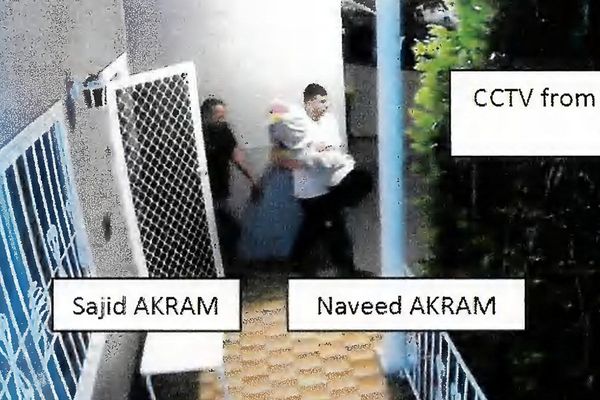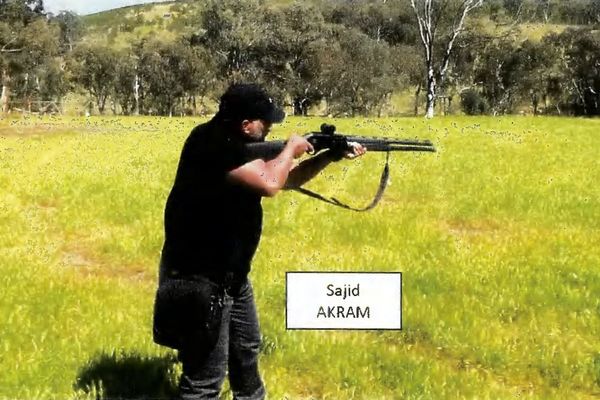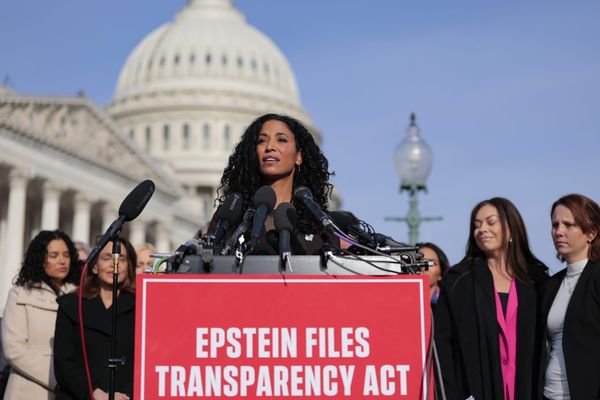As family businesses go, baseball certainly is a weird one. It’s not like father and son spend all day together over the fire at Ye Olde Baseball Shoppe, first in apprenticeship and then in partnership, forging out careers side-by-side until one day the dad turns over the shoppe keys to a full-grown son.
No, the “shared” experiences work more like this: If dad is among the one percent of the one percent and has a long enough career, the son maybe got to spend a handful of summer days at the “office,” shagging fly balls and playing catch. By the time most of the kids are old enough for coach pitch, dad is long retired.
And yet, here we are with a boom in legacy selections at the top of the draft.
Colleyville’s Bobby Witt Jr. was the second overall pick in 2019. The Rangers selected Jack Leiter, son of Al, with the second overall pick last year. This year, as many as four sons of big leaguers could go in the first round. One of them – Matt Holliday’s son, Jackson, or Andruw Jones’ son, Druw -- could be a dream selection for the Rangers’ at No. 3. That is, if they last that long. It’s possible they could go 1-2.
Are genetics the new market inefficiency?
“It’s definitely seems to be becoming more of a thing,” baseball author Travis Sawchik said. “Whether that’s related to motor-skills learning from watching an elite athlete or makeup from having been around clubhouses or genetics, I think all those things have an impact.”
And while the Rangers aren’t willing to call it a draft strategy, GM Chris Young acknowledges that the background does play a role. Perhaps a small one. But draft picks often come down to small tiebreakers.
“I think statistically it’s been proven,” Young said, referring to a study done by Sawchik. “Guys whose dads played professionally make pretty good players.”
Offspring flourish
Three years ago, Sawchik and Ben Lindbergh wrote the New York Times bestseller The MVP Machine, which focused on the data revolution in baseball and the industry’s turn towards biomechanics.
Sawchik, then a writer at the data-centric site FiveThirtyEight, also grew curious about what seemed to be a bloom of second-generation players. What he found, he summed up thusly: “If it seems like the sons of former big leaguers are taking over the sport this spring, it’s because they kind of are.”
Sawchik’s jumping off point was the rise of the Toronto Blue Jays, whose future at that point centered on the sons of Vladimir Guerrero (Vladimir Jr.), Dante Bichette (Bo) and Craig Biggio (Cavan).
In the draft prior, two MLB sons – Ryan Weathers (son of David) and Brice Turang (son of Brian) – were selected in the first round by San Diego and Milwaukee. The Jays used their second-round pick in that draft on Griffin Conine, son of Jeff.
Sawchik found that the rate at which high school players, in general, reached the big leagues was 0.2% over a 30-year period. Over the same time: Sons of former major leaguers accounted for 2% of all debuts.
And the trend seems to only be growing, particularly in the upper rounds. Since 2010, there have been 18 first-rounders whose dads played in the majors. That’s 3.4% of all first and supplemental first-round picks.
If Holliday, Jones, Cam Collier (son of Lou) and Justin Crawford (son of Carl) all go in the first round on July 17, it will set a new high for first-round kiddos.
Most mock drafts have Baltimore, which picks first, choosing between Holliday, a left-handed hitting shortstop who grew over the last year and put together a monster senior season at Stillwater (Okla.) High School, and Jones, a center fielder like his dad with all the same defensive assets, at No. 1. Arizona, which picks second, very well may take the other one. If not, the Rangers, at No. 3, almost assuredly will.
Collier, a junior college third baseman, has moved into Baseball America’s top 10 prospects. Crawford, an outfielder who attended the same high school as Joey Gallo (Bishop Gorman in Las Vegas), draws lots of comps to his father who was considered one of the best raw athletes in the 1999 draft. The most recent Baseball America mock draft had all four going in the top 12 picks.
Built-in skills
The players didn’t vault to the top of draft boards simply because of bloodlines.
It’s always about the talent first.
There are some inherent advantages that lend themselves toward making second-generation players attractive. Genetics certainly factor in there. More than the NFL or NBA, the MLB draft is about projection. It’s often about finding “comps,” for what a 17- or 18-year-old might one day become. When the answer is “his father,” it carries some weight.
But there are others.
Sawchik recalls a conversation with baseball biomechanics pioneer and outside-the-box thinker Kyle Boddy in which the Driveline founder talked about kids doing motor learning from their famous dads, about simply mimicking their parents’ movement patterns from an early age. The theory: It takes less coaching/instruction to get kids who already have superior motor skills already built in. That’s one.
Another: Kids are around big-league clubhouses and see the work their dads and their colleagues put in daily. Adrian Beltré's son, Adrian Jr., a rising high school player in Southern California was constantly around the Rangers’ clubhouse as a child and was treated by his father like a younger teammate. That went right down to comportment and dress.
“There is a lot to be said for seeing how things are done at the highest level,” former Pirates GM Neal Huntington told Sawchik back in 2019. “Whether that’s motor learning or whether it’s how people carry themselves. They see the drive, the work ethic it takes.”
Three years later, Young echoes those thoughts. He specifically cites Beltré son as an example. Young, a big believer in mental skills, thinks that being around an MLB clubhouse as a work environment can pay psychological dividends for second-generation players.
“To some degree there is an expectation around the major league field and clubhouse,” he said. “Being around high-performance athletes and what they do to get ready, the nature of the clubhouse. You can’t replicate what they are experiencing. I can’t say what level, but I think it’s a small part. That alone doesn’t move the needle [on a draft pick]. The talent has to speak for itself.”
In the case of the Witts, Bobby Jr. was born in 2000; his dad retired after 2001. He was not exposed to a clubhouse as a kid. But consider his environs. Many ex-Rangers settled in the affluent Colleyville/Southlake area. As the sons grew up together, several of their friends and teammates also had dads who played at a time when salaries exploded.
That put many of the second-generation kids together, often instructed by their dad’s former teammates. Bobby Jr. and Mason Greer, son of Rusty, were the middle infield combination at Colleyville Heritage. Rusty Greer operates a highly respected baseball school in the area. The two kids could often talk baseball with their dads.
In the case of Witt, his dad followed up his playing-career by working as an agent. At age nine, Bobby Jr. was sitting down for a lunch meeting with his dad and Dustin Pedroia. Pedroia kept in touch with Junior over the years.
In short, it was an environment primed for development.
“Your dad can be honest with you,” Bobby Jr. said. “They can tell you what they went through. They can tell you that sometimes you have to fail before you succeed. Playing baseball every day is hard. Having somebody who has gone through that is helpful for sure.”
Said the dad: “I think you can help them get to a point where it takes away the deer-in-the-headlights look. Guys who have that experience get into pro ball and go out there and don’t get overwhelmed. They are saying ‘This is what I want; this is what I expected’.”
Big investment
There is one other element that can’t be overlooked: Baseball has become a very expensive participation sport. From private instruction to travel ball to showcases, the business of building a first-round talent is a significant investment of time and money. Former players, most of them retired before age 40, have both to give their kids.
“It’s become a little bit more of an exclusive sport,” Sawchik acknowledges. “I think all the assets [of being a second-generation player] compound and build on each other.”
Of course, the Rangers say, come draft day, it won’t make a difference. Senior director of amateur scouting Kip Fagg, who plays his cards extremely close, dismisses the idea that the Rangers would lean toward a second-generation player simply because of bloodlines. He said he can cite plenty of examples of second-generation players who didn’t work out.
In fact, the Rangers have previously considered the second-generation player and turned in a different direction. In 2006, they considered Kyle Drabek, son of former Cy Young winner Doug, with their first-round pick and ultimately went in a different direction. Drabek ended up going 18th to Philadelphia and got all of 43 big league games over parts of seven seasons. Not much of a career. The Rangers pick: Kasey Kiker. He never got above Double-A. That didn’t work out too well, either.
“Some are good that way, some are not,” Fagg said of second-generation picks. “It always comes down to the individual. That the dad played at a high level and knows what it took to succeed is nice, but it doesn’t mean the kid is going to be the same way.”
In baseball, though, more and more often it seems teams are betting that it will.







